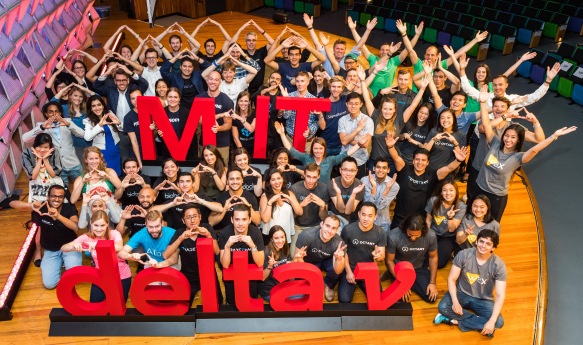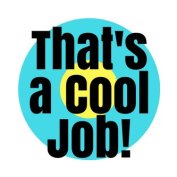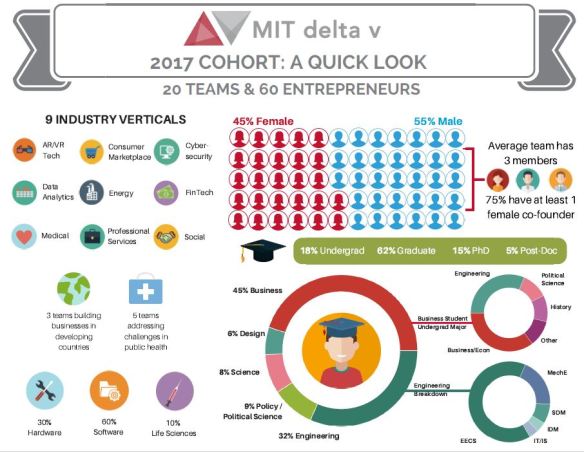 I heard a statistic the other day that 70% of people admit to feeling like an impostor at some point in their lives.* I work with students at MIT – one of the most prestigious universities in the world – and although it attracts the best and the brightest, college students at institutions like this are even more prone to suffering from insecurity.
I heard a statistic the other day that 70% of people admit to feeling like an impostor at some point in their lives.* I work with students at MIT – one of the most prestigious universities in the world – and although it attracts the best and the brightest, college students at institutions like this are even more prone to suffering from insecurity.
A former student and I were discussing her experience at MIT and she said she completed her degree in three years – not because she was smarter than the other students, but because she felt someone would find out she didn’t belong there. Wow. And it continued when she went to Harvard Business School and felt the same insecurities. Today, this woman is a successful entrepreneur, but taking risks has never come easy for her.
Imposter Syndrome is a real thing. Although it is not an official clinical diagnosis, Scientific American classifies it as “a pervasive feeling of self-doubt, insecurity, or fraudulence despite often overwhelming evidence to the contrary. It strikes smart, successful individuals. It often rears its head after an especially notable accomplishment, like admission to a prestigious university, public acclaim, winning an award, or earning a promotion.” Interestingly, minorities and women are hit the hardest. Facebook COO Sheryl Sandberg, Oscar-winning actress and Harvard alum Natalie Portman, and Starbucks CEO Howard Shultz all admit that they suffer from Imposter Syndrome and share their stories here.
Fake It Until You Make It
Those who suffer from Imposter Syndrome will probably shudder when they hear the words “fake it until you make it,” but sometimes this can be the best approach. For instance, there is a lot of research that says men will apply for a job when they typically meet only 60% of the qualifications, but women only apply if they meet 100%. This is the type of “fake it until you make it” approach that gives you a chance to level the playing field and prove yourself. The most prominent fake role, in my opinion, is parenting. You may have babysat for children and thought, “I can do this.” However, it is not until you have 100% responsibility for a child that you are aware that you are faking it. Yet we adapt, learn from our mistakes, and become better parents.
Deep Stealth Mode
My boss often talks about his first startup company being in a very “deep stealth mode” – meaning it failed. It failed, but is he a failure? Of course not. Today, Bill Aulet heads up the Martin Trust Center for MIT Entrepreneurship and he’s an accomplished professor, speaker, and author. He learned that each risk he took – and continues to take – makes him stronger. The book Antifragile by Nassim Nicholas Taleb discusses that although fragile things break under stress, there’s an entire class of other things that don’t simply resist stress, but actually grow, strengthen, or otherwise gain from unforeseen and otherwise unwelcome stimuli. There are some benefits from stress, disorder, volatility, and turmoil that may allow us to not only survive but flourish.
If you fail at a job what is the worst that can happen? You may get fired. Yet, the sun does come up the next morning. You figure out what happened, and hopefully, what you’ve learned. Then you can address the problem and try again. The key is the reflection and the learning but also taking the risk to try again. So why do most entrepreneurs fail a few times before they get it right? It may be that they are doing things that have never been done before. In some instances, they may not have the necessary skills. But the question is, can they learn or surround themselves with the right people to move forward?
Advice for Overcoming Imposter Syndrome
Going back to the story of my former MIT student; she looked to her mentors when she was faced with a decision to go out on her own and start a business. I could see that it was a positive step for her and knew she would do well. She struggled to make the decision, but we helped her through the process and assured her of her strengths. Ultimately, the decision was her own, and the leap was significant. She now has a thriving business and influences many people with the work she does every day. So what did we tell her?
- Be open to the possibilities.
- Find joy in what you do.
- Be open to change and learn.
- Learn from both failure and success, and let them make you stronger.
- Be a disciplined entrepreneur.
- Surround yourself with a board of advisors.
- Enjoy life!
The Scientific American article suggests two of the ways to overcome Imposter Syndrome are to choose a mentor (the way she chose to work with the Entrepreneurs in Residence at the Trust Center) or become a mentor. Becoming a mentor lets you gain perspective, share what you know, and nurture others.
I have grown through the ranks at large companies, completed entrepreneurial stints at two startups, and now I’m in education, guiding new entrepreneurs. Each move was, in my opinion, a risk with challenges, new people, and new technology. However, if you are lucky, you will have a long life with lots of options. I can tell you first hand it is much more meaningful to want to learn, from mistakes or circumstances, but it’s also important to know that even if I fail … I can start again.
*Statistic attributed to the International Journal of Behavioral Science

 On June 12, we’ll open the doors to this summer’s
On June 12, we’ll open the doors to this summer’s 

 I have recently been catching up with colleagues from companies past, and when I let them know what I am doing now, I often get the reaction, “Wow! That’s such a cool job.” And it is … I’m fortunate to be the director of
I have recently been catching up with colleagues from companies past, and when I let them know what I am doing now, I often get the reaction, “Wow! That’s such a cool job.” And it is … I’m fortunate to be the director of  The organization I worked at most recently, prior to MIT, was IBM – a company that is trying to bring data analytics insights to companies, so they can address real world problems. The complexity of what both our MIT startups and IBM are doing, albeit in different ways, struck me. Are they so different? I have deep respect for IBM’s CEO, Ginni Rometty, who is moving a company the size of a small nation. However, the leaders of the MIT three-person startups are also scaling difficult challenges and placing bets with tremendous odds of failure.
The organization I worked at most recently, prior to MIT, was IBM – a company that is trying to bring data analytics insights to companies, so they can address real world problems. The complexity of what both our MIT startups and IBM are doing, albeit in different ways, struck me. Are they so different? I have deep respect for IBM’s CEO, Ginni Rometty, who is moving a company the size of a small nation. However, the leaders of the MIT three-person startups are also scaling difficult challenges and placing bets with tremendous odds of failure. Is MIT any different than a corporation? The complexities of a university rival corporations, but the opportunity to be immersed in new technology brings me back to my days at Honeywell. Working with our startup teams, I feel like a first year engineer every day. The
Is MIT any different than a corporation? The complexities of a university rival corporations, but the opportunity to be immersed in new technology brings me back to my days at Honeywell. Working with our startup teams, I feel like a first year engineer every day. The  Are you ready to be inspired? MIT’s student venture accelerator,
Are you ready to be inspired? MIT’s student venture accelerator,  Here’s a brief overview of each startup that presented at Demo Day (in alphabetical order). Remember them. It’s likely you’ll be able to point back and say, “I saw them when they were just a startup at MIT…”
Here’s a brief overview of each startup that presented at Demo Day (in alphabetical order). Remember them. It’s likely you’ll be able to point back and say, “I saw them when they were just a startup at MIT…”
 Gender bias is sneaky. It’s often subtle, yet pervasive – and the effects are far reaching.
Gender bias is sneaky. It’s often subtle, yet pervasive – and the effects are far reaching.

 “As an engineer, I started asking questions about how things work. I wondered ‘Who is going to fix these big problems in the world?’ Then, it dawned on me … I can help fix these problems.”
“As an engineer, I started asking questions about how things work. I wondered ‘Who is going to fix these big problems in the world?’ Then, it dawned on me … I can help fix these problems.”
 MIT’s student venture accelerator program has kicked off for 2017!
MIT’s student venture accelerator program has kicked off for 2017!